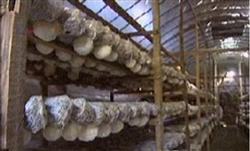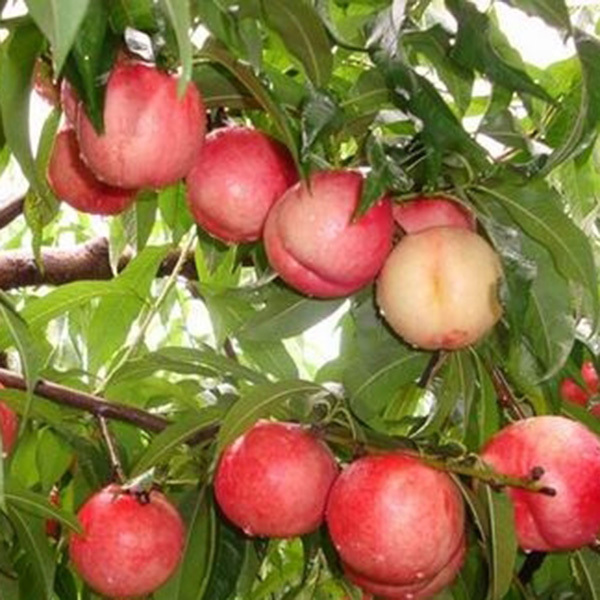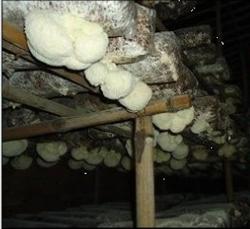Eight measures for high quality and high yield of hericium Erinaceus

First of all, the mother seed for production should have good characters, such as fast growth, uniform and tidy, and covered with slant within two weeks under the appropriate temperature. Primordia are often formed in refrigerator preservation, and a small number of chlamydospores are examined under microscope. if there are too many spores, the yield is low. If the mycelium is yellow, thin and sparse, it indicates that the strain is degraded. Uneven growth, uneven, or antagonistic phenomenon, indicating that the strain is not pure, can not be used. All original species should be dense and white, uniform up and down, no interruption of hyphae and exuberant hyphae on the surface. If the matrix shrinks, the material wall is detached, and the color is dark, it means that the strain is aging. There are various stripes and spots around the wall, indicating that the bacteria are miscellaneous and can not be used. Secondly, the age of the strain should be suitable, the mother and original seed stored in the refrigerator should not exceed 3 months, and the normal temperature (20 ℃) should not exceed 20 days. If the bacteria age is too long, the vitality decreases, not only the growth is slow, the yield is low, but also the stress resistance is poor, and it is easy to be contaminated. In addition, excellent varieties suitable for local production should be selected. The optimum temperature for timely cultivation of hericium Erinaceus mycelium was about 24 ℃, and the optimum temperature for fruiting body was 18-20 ℃. The strain is very sensitive to environmental conditions, especially at the fruiting body stage. When the air temperature is higher than 25 ℃ or lower than 12 ℃, it can not form a normal fruiting body, showing no thorns, yellowing, tufting, deformity or redness, and the growth stops. The cultivation in the north is inoculated in February or September, and the mushroom is the best in March-April or October-November, while the cultivation in spring and autumn in the south can be advanced or delayed for 20-30 days respectively. Practice has proved that the spring planting in northern China should not be later than the middle of March, so as to avoid the decrease of yield and quality due to the high temperature of more than 25 ℃ in the mushroom period. If the temperature of autumn planting is on the low side (below 30 ℃), you can try to inoculate in advance so as to end the mushroom production before the temperature drops below 12 ℃. Raw material allocation is the basis for stable and high yield. The original and cultivated seed culture materials can be used locally, and the commonly used formula is as follows: cotton husk 87%, wheat bran 10%, sucrose 1%, gypsum 1%, sawdust 1%. The results showed that in a certain range, the yield increased with the increase of the amount of wheat bran in the culture medium, but there was a limit. In cotton husk cultivation, the amount of wheat bran should not exceed 15%, otherwise, it not only increases the cost, but also loosely branches the fruiting body, showing cauliflower or coral shape, reducing the quality. In order to improve the yield and quality, more water can be added in the allowable range when mixing, and the ratio of material to water is better than 1 ∶ 1.5 ~ 1.6, so that the big ball is heavy, the color is white and the taste is good, and the quality of the product is good. The practice of small bag cultivation shows that the cultivation of hericium Erinaceus in small bag (14 cm × 30 cm) plus ring, inoculation at both ends, early mushroom emergence and high yield. Generally speaking, the head tide is 2-5 days ahead of schedule, and the ball diameter reaches 8-9 cm. When bagging, it should be tight on the outside and loose on the inside, so as to prevent the loss of water from the matrix from affecting the normal mushroom production. In addition, the material should be full, leave less space, lest the handle is too long and consume more nutrition. Thorough sterilization is the key to ensure the yield of bags. High-pressure sterilization small bags are required to keep 1.5-1.8 hours under 14.7 × 104 Pa pressure, and 1.8-2.4 hours in large bags; atmospheric pressure sterilization should be kept at 100 ℃ for 4 hours, and then heat preservation for 4 hours. If the temperature is not enough, the sterilization time should be extended. High-pressure sterilization should also prevent the bulging of the bacterial bag from breaking, so the loading mouth need not be too tight, and the method of opening valve heating, heating up by gentle fire, slow exhaust and natural pressure reduction should be used to control the flatulence during sterilization. In order to prevent the hole in the bag surface, the material bag is dipped in concentrated lime water with a pH value of 13 after sterilization, which can obviously improve the yield of the bacterial bag. The key point of cultivation and management of ventilation and moisturizing of hericium Erinaceus in mushroom period is mushroom stage, and the key of mushroom period management is temperature control, ventilation and moisturization. The primordium began to form after 19-24 days of small bag cultivation. At this time, the primordium should be moved into the mushroom room and ventilated in time to prevent the primordium from shrinking and delay the emergence of mushroom. The cross of 1cm to 2cm can be opened with a knife at the kink of mycelium in order to increase oxygen and promote the differentiation of fruiting body. After opening, you should increase the humidity and spray water so that the relative humidity of the air can reach 80% to 90%. Do not spray water to the young buds after mushroom emergence, otherwise the water will penetrate into the bag and cause the young mushrooms to shrink, and then deteriorate and rot. Spray less frequently, and the amount of water increases with the growth of the mushroom body. If the temperature is high, the ventilation is poor, spray less or not, good ventilation, suitable temperature, can spray more frequently. The fruiting body is extremely sensitive to carbon dioxide, and when the concentration of carbon dioxide in the air exceeds 0.1%, it will stimulate the mushroom stalk to differentiate continuously, forming cauliflower-like and coral-shaped fruiting bodies, reducing palatability. Therefore, ventilation must be strengthened, 2-3 times a day, for 30 minutes each time. Windows can also be opened often to ensure that the air is fresh, but do not blow the mushroom body directly to prevent discoloration and shrinkage. It takes about 10 days to harvest hericium Erinaceus from budding to maturity in time. Due to different uses, the harvest standards are different. If fresh food, canning or salinization, the fungus thorn length 0.3 cm 0.5 cm harvest is the best, at this time the mushroom body is heavy and palatable. If the thorn is more than 1 cm long, it begins to distribute spores, which is bound to reduce nutrition, while the mushroom body becomes soft and the taste decreases. When picking, cut it with a knife and leave a 2cm mushroom stalk. In order to increase the yield, the water was suspended for 3 days after the first tide mushroom was harvested and ventilated for 1 day, so that the surface of the mushroom root shrunk after being cut. Then, two 8-10 cm deep holes were drilled with bamboo chopsticks at the end of the bag. Depending on the size of the bag, 50 ml of water was added to each bag. The excess water was controlled after 24 hours, and the two-tide mushroom could be produced when cultured at suitable temperature for 7-10 days. In the later stage, the water loss of the bacteria bag was serious, the hyphae of hericium Erinaceus became weaker, the vitality decreased, and it was easy to be contaminated. Especially in warm and humid environment, it is easy to be infected with Trichoderma viride. This bacteria belongs to aerobic warm and humidity-loving bacteria, once it occurs, it is extremely difficult to control. Therefore, soil-covering cultivation can be carried out, and the specific operation is as follows: first lay soil 5cm on the ground, then take off the outer bag, put the bacterial bag in two rows longitudinally, the distance between the rows is 10-12cm, the distance between the bags is 2cm-3cm, add 3cm-4cm soil to each layer after the row, and fill the interstitial soil. After spraying moisture, the second layer can be built, usually 6cm. The mushroom wall is flattened with mud on both sides, with a thickness of 1cm to 2cm, and the top of the wall is sealed into grooves with mud to replenish water and moisturize. This treatment can not only prevent mildew, but also provide water and nutrients for the growth of hericium Erinaceus fruit body. The method of border covering soil can also be used, which is more conducive to replenishing water.
- Prev

Planting techniques of nectarine
Planting techniques of nectarine
- Next

Fast-growing and High-yield cultivation techniques of hericium Erinaceus
Hericium Erinaceus belongs to a kind of edible fungus with fresh flesh and delicious fragrance. In recent years, with the expansion of the artificial cultivation area of hericium Erinaceus, the yield is also increasing. Now the fast-growing and high cultivation techniques of hericium Erinaceus are introduced as follows. 1. Choose fresh and clean sawdust or cottonseed shell as raw materials. If the raw material.
Related
- Fuxing push coffee new agricultural production and marketing class: lack of small-scale processing plants
- Jujube rice field leisure farm deep ploughing Yilan for five years to create a space for organic food and play
- Nongyu Farm-A trial of organic papaya for brave women with advanced technology
- Four points for attention in the prevention and control of diseases and insect pests of edible fungi
- How to add nutrient solution to Edible Fungi
- Is there any good way to control edible fungus mites?
- Open Inoculation Technology of Edible Fungi
- Is there any clever way to use fertilizer for edible fungus in winter?
- What agents are used to kill the pathogens of edible fungi in the mushroom shed?
- Rapid drying of Edible Fungi

